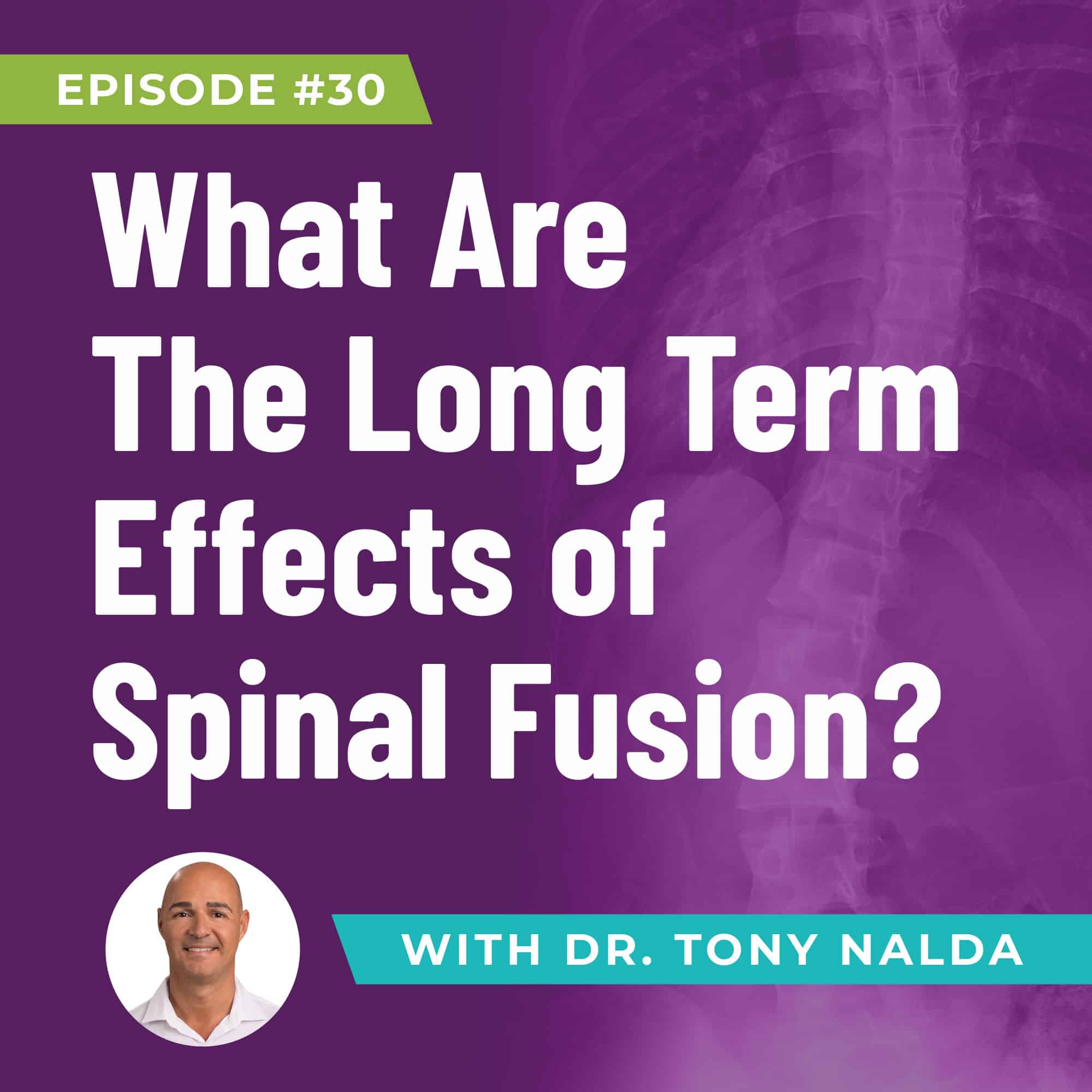Episode 30: What Are The Long Term Effects of Spinal Fusion?
Spinal fusion is a major surgery.
It is where one or more spinal bones (vertebrae) are fused together using screws, bolts, and or plates. The hardware may be placed in the front (anterior) or the back (posterior) of the spine. The disc between the spinal bones is oftentimes removed and replaced with bone or a spacer.
Spinal fusion can be done in the neck, thoracic, and lumbar regions.
Lumbar fusion is a surgical treatment for patients with ongoing pain, low back pain, or leg pain that has failed conservative treatment. Lumbar fusion surgery has become increasingly popular.
The long-term side effects of Spinal fusion complications long-term can be broken down into two major categories:
- Failure of the procedure itself (failed fusion)
- Complications arise as a result of the fusion.
The most common causes of a failed lumbar fusion are nonunion, hardware breaking, and hardware becoming loose.
- Non-union occurs when the spinal bones that are bolted together fail to fuse or grow together.
- The spinal bones are stabilized by the use of screws, bolts, and plates during lumbar fusion. Significant stresses are applied to the low back and the hardware; as a result, the hardware breaks, resulting in spinal instability and discomfort. In lumbar fusion, screws are utilized to support the spine. The screws can come loose due to the same stresses that can break the hardware.
What's the main benefit of doing this? When it comes to scoliosis, surgery is the most common and traditional treatment option in our healthcare system, thus the goal is to attempt to stop progression even though there is very little study on the potential adverse effects and why so many individuals actually choose to have it.
The final consequence of patient management by a surgeon is surgery, as would be expected, but patient management by a person who deals with conservative care is likely to result in more conservative care rather than surgery.
Surgery can be used to treat scoliosis, and it's more likely to obtain any kind of reduction, but you won't be able to do so with the curve. When it comes to surgery, it should be your last resort. This means that you've exhausted all other treatment options and now you're forced to consider surgery.
At this point, it's similar to when it comes to scoliosis therapy.
Don't forget to check out Dr. Tony Nalda's podcast for more information.
Artlist.io 847544
Podcast: Play in new window | Download
Subscribe: RSS
Dr. Tony Nalda
DOCTOR OF CHIROPRACTIC
After receiving an undergraduate degree in psychology and his Doctorate of Chiropractic from Life University, Dr. Nalda settled in Celebration, Florida and proceeded to build one of Central Florida’s most successful chiropractic clinics.
His experience with patients suffering from scoliosis, and the confusion and frustration they faced, led him to seek a specialty in scoliosis care. In 2006 he completed his Intensive Care Certification from CLEAR Institute, a leading scoliosis educational and certification center.
About Dr. Tony Nalda
 Ready to explore scoliosis treatment? Contact Us Now
Ready to explore scoliosis treatment? Contact Us Now








